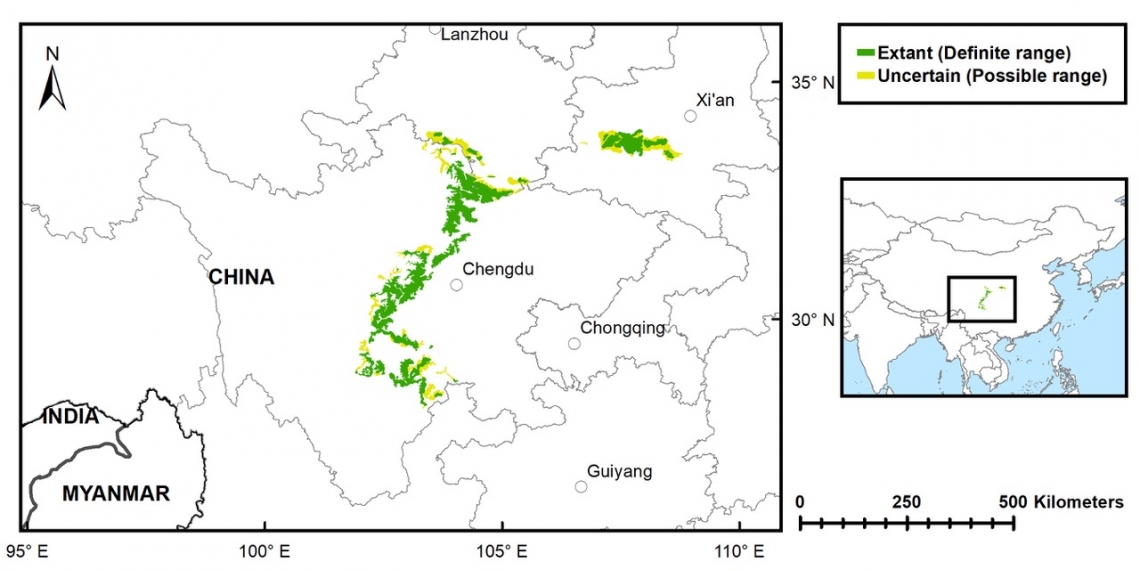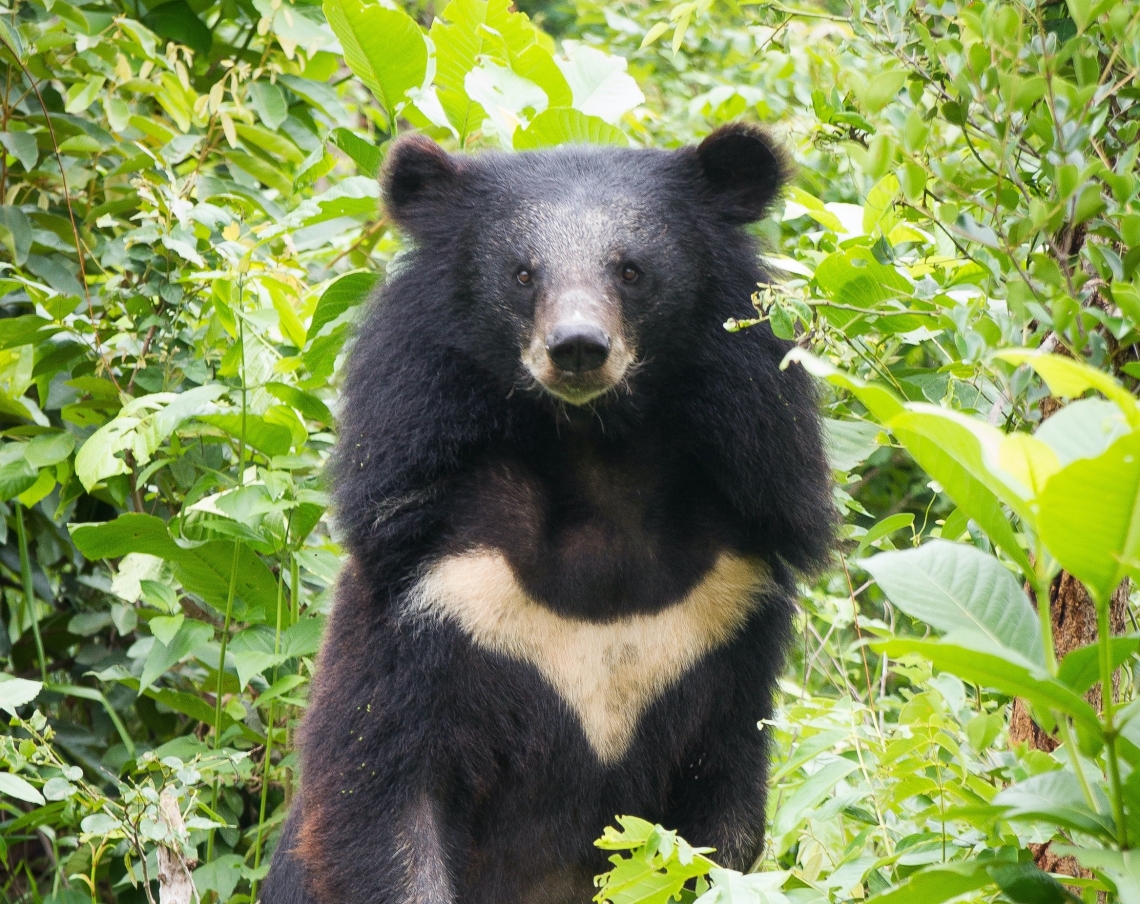Distribution: The current giant panda distribution is confined to western portions of Sichuan, Shaanxi, and Gansu provinces. Their primary range includes the Minshan, Qinling, Qionglai mountain ranges, with smaller, more isolated populations in the Daxiangling, Liangshan, and Xiaoxiangling mountain ranges. About 30 subpopulations have been identified, with unknown interchange among them.

Range map of giant panda from 4th National Survey (2011-2014), created by D Wang
Range countries: (1): China
Extirpation: The giant panda was once widespread throughout southern and central China and northern parts of Southeast Asia, but due to extreme habitat loss, its distribution is now confined to western, mountainous portions of Sichuan, Shaanxi and Gansu provinces. Fossil and historical records indicate the giant panda was extirpated from Myanmar, Laos, Vietnam, and Thailand, as well as most of their former range in China.
Elevational range: Giant pandas are currently restricted to forested environments at elevations ranging from 1,100 m to 3,600 m. Pandas rarely range above treeline, which sets their upper elevational limits. Historically, they were more common at lower elevations, but the forested environment at low elevations has largely been converted to agricultural and other human uses. Whereas today’s giant pandas are often thought of as a species that lives in the rugged mountains, that habitat was a very small and marginal part of their historic range.
Overlap with other species: The giant panda’s range overlaps extensively with the Asiatic black bear. However, the 2 species do not compete for the same foods, and they use different elevations seasonally, so probably rarely interact.

Asiatic black bear_U thibetanus_Cambodia bear sanctuary_Free the Bears